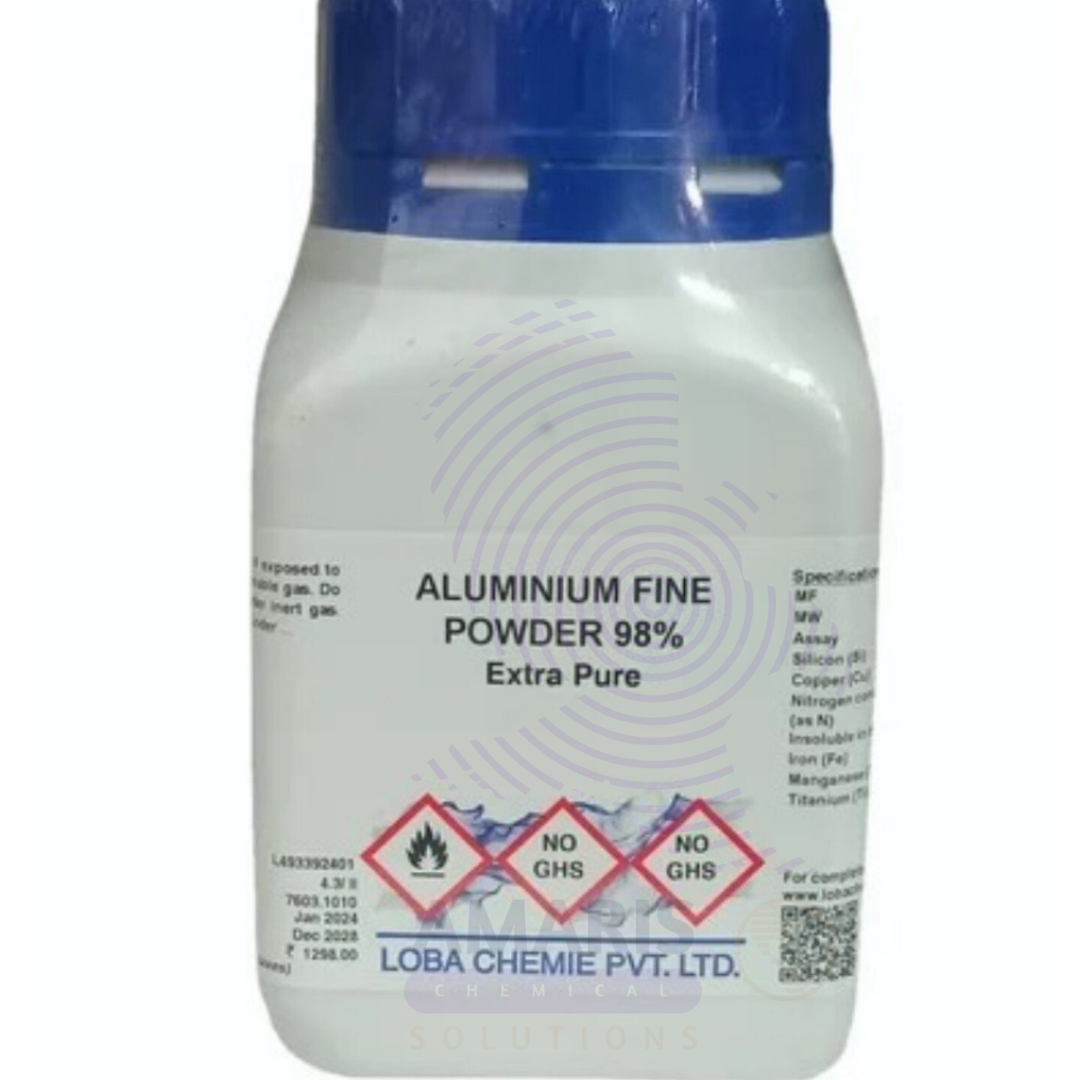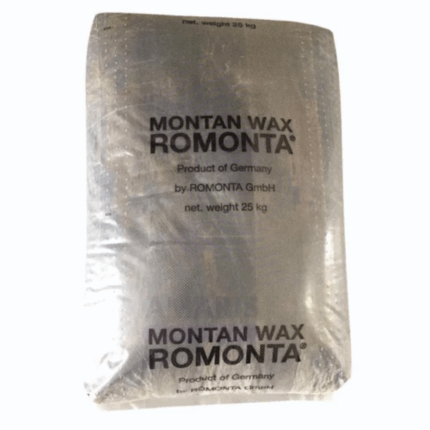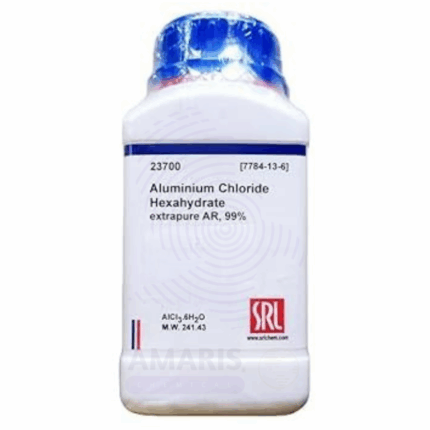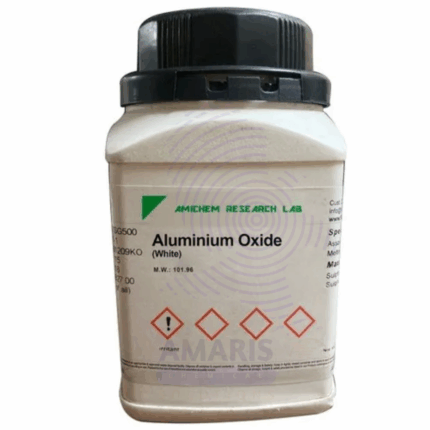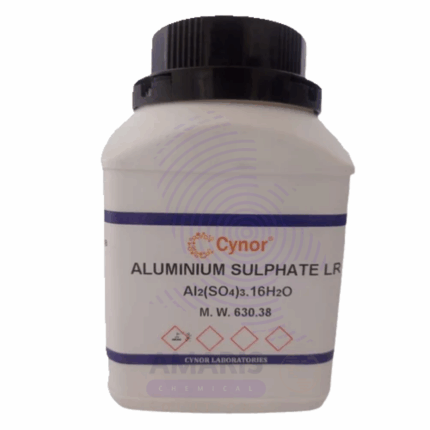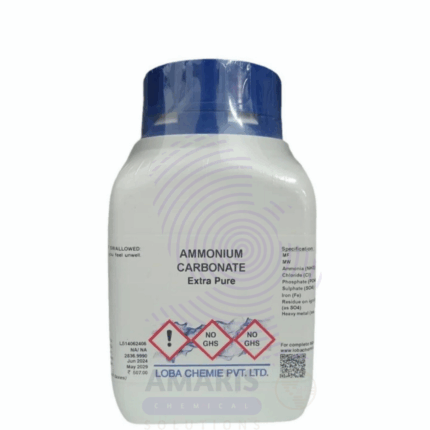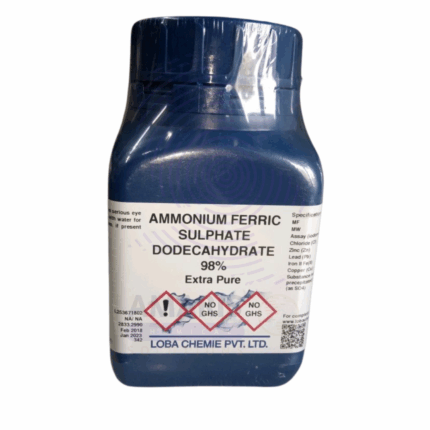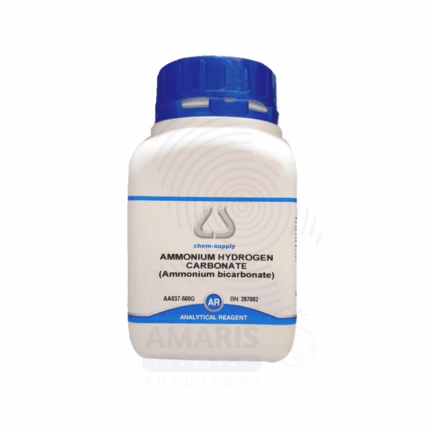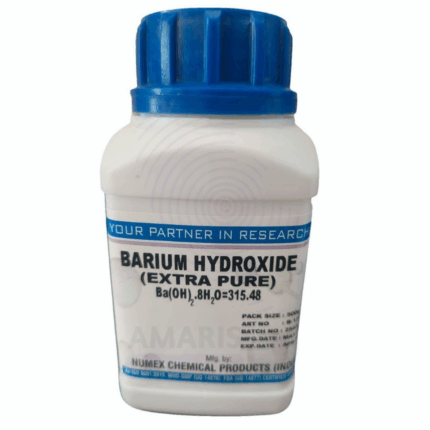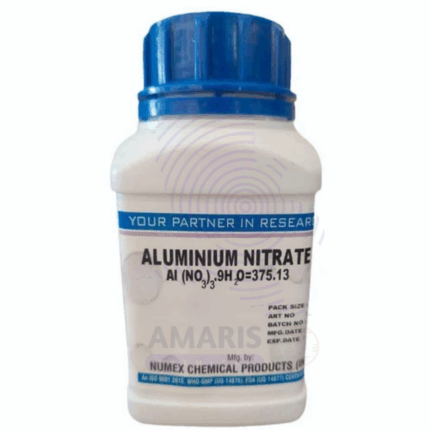
Aluminium Metal Fine Extra Pure
$ 23.00 Original price was: $ 23.00.$ 22.48Current price is: $ 22.48.
Aluminium Metal Fine Extra Pure is a high-purity, silvery-grey powder composed of finely divided aluminum particles, ideal for precision laboratory work and specialized chemical reactions. Known for its high surface area and excellent reactivity, it is widely used in thermite reactions, metallurgical experiments, and the synthesis of aluminum-based compounds. Its fine particle size enhances its role as a reducing agent in organic and inorganic chemistry, as well as in combustion and pyrotechnic research. The extra pure grade ensures minimal trace impurities, supporting consistent and accurate results in sensitive analytical and preparative procedures. Due to its flammability and potential for dust explosions, it must be handled with caution in well-ventilated areas and stored in sealed, moisture-free containers.
Aluminium Metal Fine Extra Pure
Primary Uses
- Reagent in Redox and Thermite Reactions
- Used in classic and advanced redox experiments (e.g. the thermite reaction with Fe₂O₃) to demonstrate highly exothermic reactions.
- Reducing Agent in Inorganic Synthesis
- Acts as a strong reducing agent in the preparation of certain metal powders from their oxides or salts.
- Reactant in Hydrogen Generation Studies
- Reacts with bases like NaOH in water to produce hydrogen gas; used in studying gas evolution and stoichiometry.
- Material for Metallurgical & Pyrotechnic Research
- Used in laboratory-scale studies on alloy formation, combustion analysis, and energy-release experiments.
- Conductivity and Surface Area Research
- Studied for its high surface reactivity and electrical conductivity in solid-state physics or nanomaterial synthesis.
Secondary Uses
- Combustion and Energetic Material Studies
- Used in research on energetic materials, propellant testing, or ignition behavior under lab-controlled conditions.
- Electrochemistry and Galvanic Cell Experiments
- Acts as an electrode material or sacrificial anode in experimental electrochemical cells.
- Catalyst Support or Carrier
- Sometimes used as a support for catalytic materials in prototype catalyst development.
- Corrosion & Passivation Research
- Enables investigation into the formation and behavior of aluminum oxide passivation layers.
- Educational Demonstrations of Reactivity Series
- Ideal for comparing reactivity of metals and exploring displacement reactions in teaching labs.
| PACK SIZE |
100 grams Plastic Tin |
|---|
1. Basic Identification Attributes
- Chemical Name: Aluminium (IUPAC: Aluminium metal, fine powder)
- CAS Number: 7429-90-5
- HS Code: 7603.10.00 (Aluminium powders of non-lamellar structure)
- Molecular Formula: Al
- Synonyms:
- Aluminium powder
- Aluminum metal powder
- Atomized aluminium
- Aluminium dust
- Fine aluminium particles
2. Physical & Chemical Properties
- Physical State: Solid (fine powder)
- Color & Odor: Silvery-gray powder; odorless
- Boiling Point: ~2,470°C
- Melting Point: ~660.3°C
- Density/Specific Gravity: ~2.70 g/cm³
- Solubility:
- Water: Insoluble; reacts slowly in moist air
- Acids: Soluble in hydrochloric acid, sulfuric acid (forms hydrogen gas)
- Bases: Soluble in strong alkalis (forms aluminates)
- pH Level: Not applicable
- Vapor Pressure & Volatility: Negligible at room temperature
- Flash Point: Highly flammable as a powder
- Autoignition Temperature: ~590°C (in air, fine powder)
- Viscosity: Not applicable
3. Safety & Hazard Attributes
- Hazard Class (GHS):
- Flammable solid (Category 2)
- May form explosive dust-air mixtures
- Reacts with acids and bases
- NFPA Ratings:
- Health: 1
- Flammability: 3
- Reactivity: 1
- Exposure Limits:
- OSHA PEL (Total dust): 15 mg/m³
- ACGIH TLV (Respirable fraction): 1 mg/m³ (as Al)
- Reactivity:
- Reacts with water in presence of heat
- Reacts violently with oxidizers and some acids/bases
- Risk of dust explosion if dispersed in air
4. Storage & Handling Attributes
- Storage Conditions:
- Store in tightly sealed containers in a cool, dry, flame-proof area
- Avoid friction, heat, or sparks near storage area
- Incompatible Materials:
- Strong oxidizers (e.g., nitrates, peroxides)
- Acids and alkalis (can produce hydrogen gas)
- Container Type:
- Metal or antistatic plastic containers, inert-sealed if ultra-fine grade
- Shelf Life & Expiration Date:
- Indefinite if stored properly and uncontaminated
- Special Handling Requirements:
- Use under fume hood if risk of dust dispersion
- Antistatic PPE, explosion-proof tools, grounded equipment recommended
5. Regulatory & Compliance Attributes
- Regulatory Status:
- Listed in TSCA, REACH
- Regulated as a hazardous material in powdered form
- Transportation Restrictions:
- UN Number: UN1396 (Aluminium powder, uncoated)
- Hazard Class: 4.1 (Flammable solid)
- Packing Group: II
- Waste Disposal Method:
- Do not dispose of with combustible materials
- Collect and treat as hazardous waste according to local regulations
6. Environmental & Health Impact
- Ecotoxicity:
- Low toxicity in solid form
- May be harmful to aquatic organisms in fine particle suspensions
- Persistence in Environment:
- Stable in dry form; oxidizes slowly over time
- Carcinogenicity/Mutagenicity:
- Not classified as carcinogenic
- Biodegradability:
- Not biodegradable; oxidizes to inert aluminium oxide (Al₂O₃)
SAFETY PRECAUTIONS
- Personal Protective Equipment (PPE):
- Wear chemical-resistant gloves, lab coat, and safety goggles.
- Use a dust mask or respirator when handling powders, especially in enclosed spaces.
- Handling:
- Handled in a dry, inert environment—very fine aluminum powders can be pyrophoric (spontaneously flammable in air).
- Avoid friction, impact, and formation of airborne dust.
- Use non-sparking tools and ground all equipment to prevent static discharge.
- Storage:
- Store in a tightly sealed container under dry, cool, inert conditions.
- Keep away from water, moisture, heat sources, open flames, and oxidizing agents.
- Avoid accumulation of dust and store away from incompatible substances (acids, halogens, strong oxidizers).
- Hygiene Measures:
- Wash hands thoroughly after handling.
- Avoid contact with eyes and skin, and do not breathe dust.
- Keep lab area clean and free from combustible materials.
FIRST AID MEASURES
- Inhalation:
- Move the person to fresh air immediately.
- Provide oxygen if breathing is difficult.
- Seek medical attention if symptoms (e.g., coughing, shortness of breath) persist.
- Skin Contact:
- Wash skin with plenty of soap and water.
- Remove contaminated clothing.
- Seek medical attention if irritation occurs.
- Eye Contact:
- Rinse eyes gently with water for at least 15 minutes.
- Lift eyelids occasionally while flushing.
- Seek prompt medical attention if irritation or injury persists.
- Ingestion:
- Rinse mouth with water.
- Do not induce vomiting.
- Seek immediate medical attention even though metallic aluminum is generally considered low in toxicity.
FIRE FIGHTING MEASURES
- Suitable Extinguishing Media:
- Use Class D dry powder extinguishers (e.g., dry sand, sodium chloride, or Met-L-X) for metal fires.
- Do not use water, foam, or CO₂—these may react violently with burning aluminum.
- Specific Hazards:
- Highly flammable in fine powder form.
- Dust clouds may form explosive mixtures with air.
- Burning aluminum produces intense heat and bright white light, along with aluminum oxide fumes.
- Protective Equipment for Firefighters:
- Use full fire-resistant protective clothing and self-contained breathing apparatus (SCBA).
- Firefighting Instructions:
- Avoid disturbing the powder during fire.
- Fight fire from a safe distance and upwind.
- Isolate the area and evacuate unnecessary personnel.
Related products
Aluminium Chloride Hydrated Extra Pure
Aluminium Nitrate Extra Pure
Aluminium Oxide Extra Pure
Aluminium Sulphate Anhydrous Extra Pure
Ammonium Carbonate Extra Pure
Ammonium Carbonate Extra Pure is a high-quality, white crystalline solid widely used across various scientific, industrial, and food-related applications. Manufactured to stringent purity standards, this compound is ideal for laboratories and processes that demand high-grade reagents. With its characteristic ammonia-like odor and ability to decompose upon heating, ammonium carbonate plays a versatile role in both chemical reactions and physical processes.
In aqueous solution, ammonium carbonate breaks down into ammonium bicarbonate and ammonium carbamate, further releasing ammonia (NH₃) and carbon dioxide (CO₂) upon heating. This property makes it especially useful in applications that require controlled gas release or temporary pH modification.


 Preservatives(food)
Preservatives(food) Flavor Enhancers
Flavor Enhancers Acidulants
Acidulants Sweeteners
Sweeteners Antioxidants
Antioxidants Colorants(food)
Colorants(food) Nutraceutical Ingredients (food)
Nutraceutical Ingredients (food) Nutrient Supplements
Nutrient Supplements Emulsifiers
Emulsifiers
 Collectors
Collectors Dust Suppressants
Dust Suppressants Explosives and Blasting Agents
Explosives and Blasting Agents Flocculants and Coagulants
Flocculants and Coagulants Frothers
Frothers Leaching Agents
Leaching Agents pH Modifiers
pH Modifiers Precious Metal Extraction Agents
Precious Metal Extraction Agents
 Antioxidants(plastic)
Antioxidants(plastic) Colorants (Pigments, Dyes)
Colorants (Pigments, Dyes) Fillers and Reinforcements
Fillers and Reinforcements Flame Retardants
Flame Retardants Monomers
Monomers Plasticizers
Plasticizers Polymerization Initiators
Polymerization Initiators Stabilizers (UV, Heat)
Stabilizers (UV, Heat)
 Antifoaming Agents
Antifoaming Agents Chelating Agents
Chelating Agents Coagulants and Flocculants
Coagulants and Flocculants Corrosion Inhibitors
Corrosion Inhibitors Disinfectants and Biocides
Disinfectants and Biocides Oxidizing Agents
Oxidizing Agents pH Adjusters
pH Adjusters Scale Inhibitors( water)
Scale Inhibitors( water)
 Antioxidants(cosmetic)
Antioxidants(cosmetic) Emollients
Emollients Fragrances and Essential Oils
Fragrances and Essential Oils Humectants
Humectants Preservatives
Preservatives Surfactants(cosmetic)
Surfactants(cosmetic) Thickeners
Thickeners UV Filters
UV Filters
 Fertilizers
Fertilizers Soil Conditioners
Soil Conditioners Plant Growth Regulators
Plant Growth Regulators Animal Feed Additives
Animal Feed Additives Biostimulants
Biostimulants Pesticides (Herbicides, Insecticides, Fungicides)
Pesticides (Herbicides, Insecticides, Fungicides)
 Active Pharmaceutical Ingredients (APIs)
Active Pharmaceutical Ingredients (APIs) Excipients
Excipients Solvents(pharmaceutical)
Solvents(pharmaceutical) Antibiotics
Antibiotics Antiseptics and Disinfectants
Antiseptics and Disinfectants Vaccine Adjuvants
Vaccine Adjuvants Nutraceutical Ingredients (pharmaceutical)
Nutraceutical Ingredients (pharmaceutical) Analgesics & Antipyretics
Analgesics & Antipyretics
 Analytical Reagents
Analytical Reagents Solvents(lab)
Solvents(lab) Chromatography Chemicals
Chromatography Chemicals Spectroscopy Reagents
Spectroscopy Reagents microbiology-and-cell-culture-reagents
microbiology-and-cell-culture-reagents Molecular Biology Reagents
Molecular Biology Reagents Biochemical Reagents
Biochemical Reagents Inorganic and Organic Standards
Inorganic and Organic Standards Laboratory Safety Chemicals
Laboratory Safety Chemicals Specialty Laboratory Chemicals(Special Laboratory Equipment)
Specialty Laboratory Chemicals(Special Laboratory Equipment)
 Demulsifiers
Demulsifiers Hydraulic Fracturing Fluids
Hydraulic Fracturing Fluids Scale Inhibitors(oil)
Scale Inhibitors(oil) Surfactants(oil)
Surfactants(oil) Drilling Fluids
Drilling Fluids
 Dyes and Pigments
Dyes and Pigments Bleaching Agents
Bleaching Agents Softening Agents
Softening Agents Finishing Agents
Finishing Agents Antistatic Agents
Antistatic Agents
 Admixtures
Admixtures Waterproofing Agents
Waterproofing Agents Sealants and Adhesives
Sealants and Adhesives Curing Compounds
Curing Compounds Concrete Repair Chemicals
Concrete Repair Chemicals Anti-Corrosion Coatings
Anti-Corrosion Coatings
 Surfactants(cleaning)
Surfactants(cleaning) Builders
Builders Enzymes
Enzymes Solvents (Cleaning)
Solvents (Cleaning) Fragrances
Fragrances
 Electronic Chemicals
Electronic Chemicals Catalysts
Catalysts Lubricants
Lubricants Photographic Chemicals
Photographic Chemicals Refrigerants
Refrigerants Automotive chemicals
Automotive chemicals Pyrotechnic Chemicals
Pyrotechnic Chemicals
 Biodegradable Surfactants
Biodegradable Surfactants Bio-based Solvents
Bio-based Solvents Renewable Polymers
Renewable Polymers Carbon Capture Chemicals
Carbon Capture Chemicals Wastewater Treatment Chemicals
Wastewater Treatment Chemicals
 Pigments
Pigments Solvents(paint)
Solvents(paint) Specialty Coatings
Specialty Coatings Binders/Resins
Binders/Resins Additives
Additives Driers
Driers Anti-Corrosion Agents
Anti-Corrosion Agents Functional Coatings
Functional Coatings Application-Specific Coatings
Application-Specific Coatings
 Fresh Herbs
Fresh Herbs Ground Spices
Ground Spices Whole Spices
Whole Spices Spice Blends
Spice Blends Dried Herbs
Dried Herbs
 Leavening Agents
Leavening Agents Dough Conditioners
Dough Conditioners Flour Treatments
Flour Treatments Fat Replacers
Fat Replacers Decoratives
Decoratives Preservatives(baking)
Preservatives(baking)
 Plasticizers & Softeners
Plasticizers & Softeners Reinforcing Agents
Reinforcing Agents Adhesion Promoters
Adhesion Promoters Vulcanizing Agents
Vulcanizing Agents Antidegradants
Antidegradants Blowing Agents
Blowing Agents Fillers & Extenders
Fillers & Extenders Accelerators & Retarders
Accelerators & Retarders